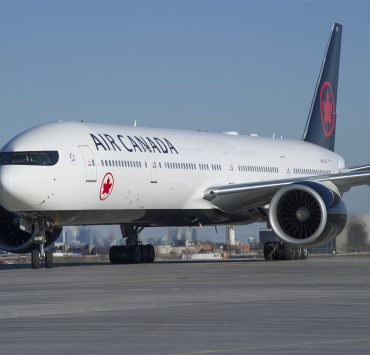The official Qantas safety video that had just been screened to 222 passengers aboard an Airbus A330 just before an emergency evacuation was ordered in December 2019 at Sydney Airport may have encouraged some of them to take their hand luggage with them.
Investigators have concluded that there were “limitations and inconsistencies” in both the Qantas safety video and briefing card which described how to safely use an emergency evacuation slide and what to do with cabin baggage in the event of an evacuation.
Six passengers were injured during the evacuation and sustained a range of injuries including knee sprains, friction burns, and elbow cuts and abrasions. One of the injured passengers was badly hurt and suffered tendon ruptures in both knees.
The Australian Transport Safety Bureau has issued a slew of safety recommendations to Qantas as part of the investigation into the December 15, 2019 incident.
The Perth-bound flight had just taken off when a hydraulic leak forced the pilots to return to Sydney. Shortly after landing and while being towed to the gate, a haze started to develop in the cabin and an evacuation was ordered by the Captain.
“The ATSB found limitations and inconsistencies in how Qantas’s safety video and briefing card described emergency slide use and what to do with cabin baggage in an emergency,” commented the bureau’s Chief Commissioner Angus Mitchell.
“For example, the pre-flight video showed a passenger sitting down and placing their bag next to them, just prior to sliding.” (From 4:44 in the safety video above).
The video also showed the passenger leaning backwards while sliding but the actual instruction was for passengers to lean forward while on the slide.
Some passengers evacuated the aircraft with their hand luggage – an act that can dangerously slow down an evacuation and pose a threat to the integrity of the slide raft.
But the evacuation was further hampered by the fact that the aircraft had just reached the gate and jet bridges were being attached when the evacuation was ordered.
Investigators found that a lack of cabin crew training to deal with an eventuality that the crew found themselves in during this incident posed several serious safety issues:
- Cabin crew didn’t receive regular training on what to do if an evacuation is ordered but the emergency slides have been disarmed and need rearming
- Cabin crew weren’t taught to use industry-standard evacuation commands like “leave everything behind” and “jump and slide”
- Qantas did not have a formal ‘rapid disembarkation’ process in which passengers evacuate via jet bridges but leave hand luggage behind
“Accidents around the world continue to show there is a significant risk of injury to passengers when escape slides are used,” Mitchell said.
“This risk is acceptable in a life-threatening situation where the alternative may be catastrophic, but in cases such as a fumes event – particularly if the aerobridge is already attached – a rapid disembarkation procedure may be preferable,” he continued.
In this incident, however, the ATSB found that the Captain acted appropriately by ordering an emergency evacuation.
Qantas only started to work on a rapid disembarkation policy in May. The safety video was replaced shortly after the incident in March 2020.
Mateusz Maszczynski honed his skills as an international flight attendant at the most prominent airline in the Middle East and has been flying throughout the COVID-19 pandemic for a well-known European airline. Matt is passionate about the aviation industry and has become an expert in passenger experience and human-centric stories. Always keeping an ear close to the ground, Matt's industry insights, analysis and news coverage is frequently relied upon by some of the biggest names in journalism.









